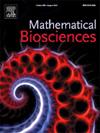A nonautonomous model for the impact of toxicants on size-structured aquatic populations: Well-posedness and long-term dynamics
IF 1.9
4区 数学
Q2 BIOLOGY
引用次数: 0
Abstract
Mathematical models have played a crucial role in understanding and assessing the impacts of toxicants on populations. However, many existing population-toxicant interaction models are physically unstructured and represented by autonomous systems, assuming all individuals are identical and model parameters are constant over time. In this paper, we develop a nonautonomous model describing the interaction between a size-structured population and an unstructured toxicant in a polluted aquatic ecosystem. This model allows us to investigate the influence of size- and time-dependent individual vital rates (growth, reproduction, and mortality), time-varying toxicant input and degradation, and size-specific sensitivity of individuals to toxicants on population persistence. We establish the existence and uniqueness of solutions for this model using the monotone method, based on a comparison principle. We then analyze how time- and size-dependent parameters affect the long-term population dynamics. Specifically, we derive conditions on these parameters that lead to either extinction or persistence of the population. We provide a comparative analysis of numerical solutions between our size-structured model and an unstructured model with size-averaged parameters, emphasizing the significance of incorporating size structure when evaluating the effects of toxicants on populations.
求助全文
约1分钟内获得全文
求助全文
来源期刊

Mathematical Biosciences
生物-生物学
CiteScore
7.50
自引率
2.30%
发文量
67
审稿时长
18 days
期刊介绍:
Mathematical Biosciences publishes work providing new concepts or new understanding of biological systems using mathematical models, or methodological articles likely to find application to multiple biological systems. Papers are expected to present a major research finding of broad significance for the biological sciences, or mathematical biology. Mathematical Biosciences welcomes original research articles, letters, reviews and perspectives.
 求助内容:
求助内容: 应助结果提醒方式:
应助结果提醒方式:


